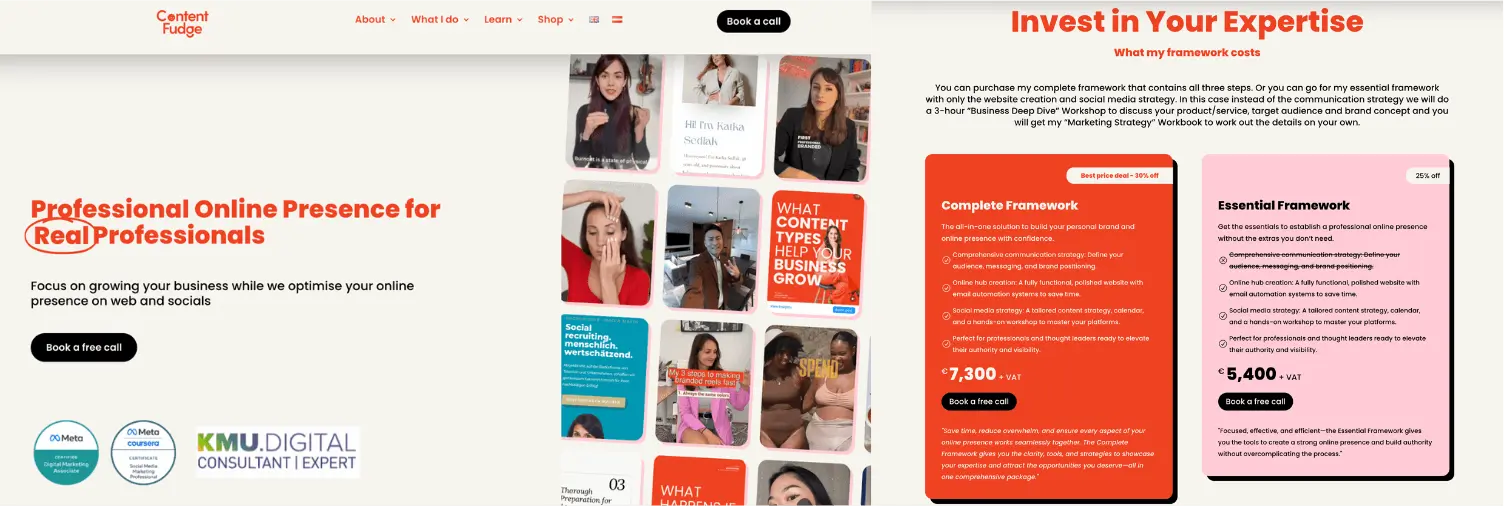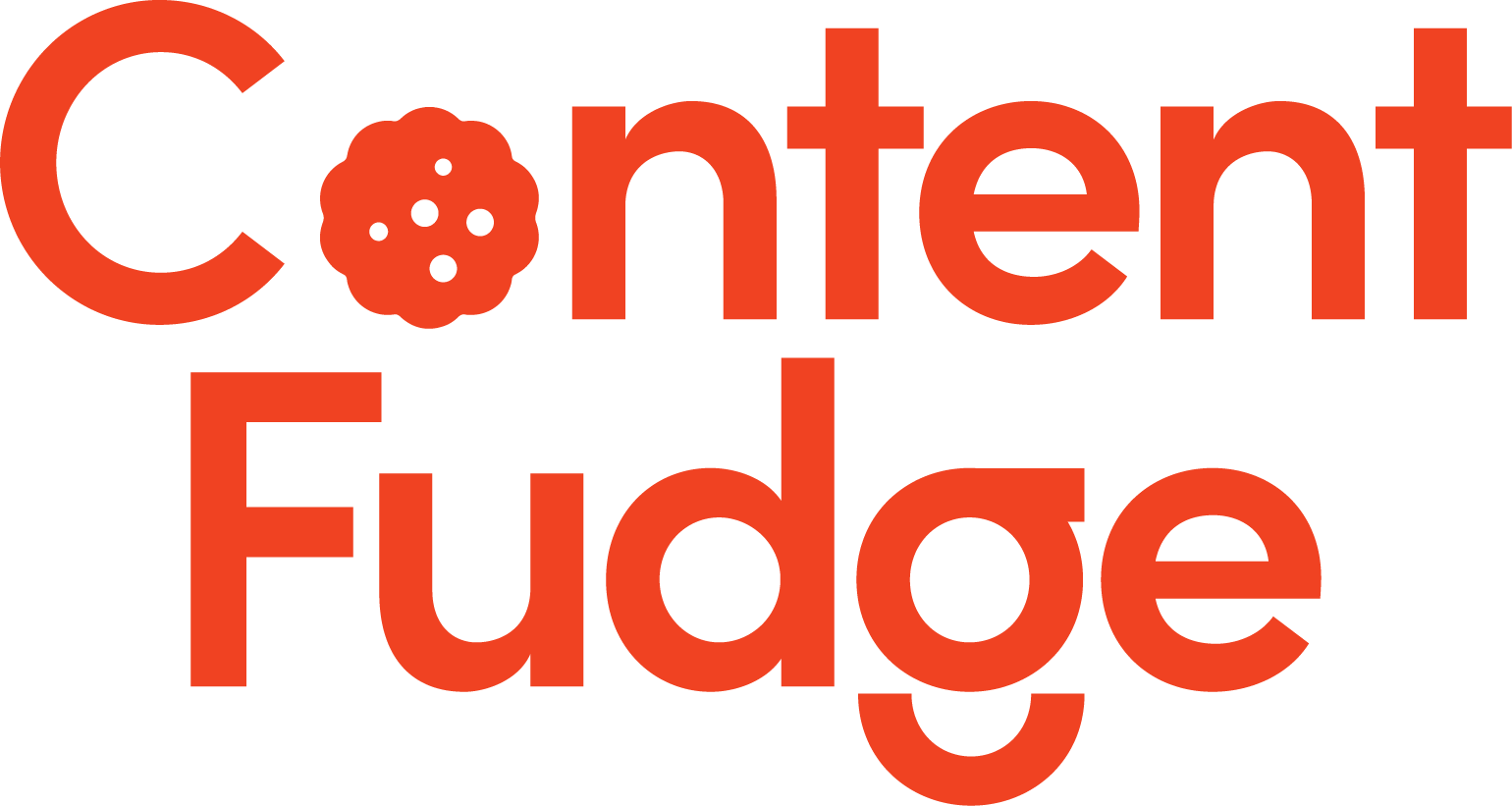Everything You Need to Crush Your Business’s Online Presence in 2025
Your business’s online presence in 2025 isn’t just a ‘nice-to-have’—it’s the foundation for scaling, building trust, and attracting dream clients. This guide breaks down everything you need to create a professional, efficient digital strategy, from SEO and social media to lead generation and content marketing. Start building a system that works for you while you focus on doing what you love.
Written by Anzhelika Tauber

Running your own business often feels like you’re juggling flaming swords while blindfolded, doesn’t it? Between serving clients, managing operations, and squeezing in a moment to breathe, who has time to build a thriving online presence? And with all the new technology and software, 2025 seems like a big black hole.
But here’s the thing: your digital footprint isn’t just another item on the to-do list. It’s the foundation for scaling your business, attracting dream clients, and reclaiming your time. (Call me an automation geek, but if it saves me hours, I’m all in—both for my business and my clients’.)
This checklist is a proven roadmap to get your business online efficiently and effectively. Something that I follow for my own business and when building online presence for my clients. Whether you’re starting from scratch or tweaking your existing setup, it’s designed with one goal in mind: helping busy professionals like you establish a scalable, professional presence without drowning in overwhelm. Because let’s be honest, your time is better spent sealing deals than decoding SEO.
Table of contents
1. Digital Strategy Foundation
Before diving in, set the groundwork for your digital presence.
- Define Goals: What’s your primary objective? Lead generation, brand awareness, sales, or just being present online? If you know what you’re working toward, every following decision will be easier.
- Know Your Audience: Demographics, schmemographics—we hear it all the time. Here’s my secret for creating on-point offers and content for your target audience → Imagine one ideal, really ideal client you’d love to work with all the time, and create all your content, copy, and offers for that one ideal client. Especially if you’ve already worked with someone perfect and want more clients like them. Or if you’ve given workshops at a dream company and want more clients like that. Or if you’ve presented at an amazing event and crave more opportunities like it. Do everything with that one ideal client in mind.
Mine is called Jen, by the way. Jen and I go way back—it can get a little awkward sometimes between Jen and the other voices in my head 😅… but she keeps me on point. 😌
- Brand Identity: Craft a cohesive message, visuals, and tone that represent your business consistently. Honestly, I don’t care how pretty your IG account or website is. There are accounts absolutely crushing it where experts just speak their opinions into the camera—no fancy editing, no design. As long as it’s authentic and people see that you know what you’re talking about, it will work. Aesthetics matter on Pinterest, but if you want to position yourself as an expert, a true professional, and a thought leader, what you say and cohesive messaging are what matter most.
Plus, defining your messaging and tone as part of your strategy will help you create custom GPTs that save you a tooooooooooooon of time. Seriously, my custom GPT writes all my emails for me in my exact voice for my specific target audience. It even consults me on what will resonate with them (and what won’t). So don’t dismiss the importance of your messaging and tone. 😉
- Content Themes: Establish your core topics or pillars to keep your messaging clear and aligned with your goals. When you expand beyond your brand into the areas you want to talk about online, pick 3–4 main topics and stick to them. Really, just 3–4. Once it feels like you’ve said everything you could possibly say about those topics, just repeat.
Remember, on social media:
- 75% of your followers didn’t see it.
- 80% of your followers won’t remember it.
- 100% of your new followers never saw it.
Repurpose often. Nobody remembers your content the way you do.
2. Professional Website
Your website is your online HQ. Make it polished and functional.
- User-Friendly Design with Intuitive Navigation: You don’t need to reinvent the wheel when designing your website. People expect your logo on the top left, a main CTA button on the top right, and a clear UVP (unique value proposition) as the first two sentences. Always prioritize the area “above the fold” (before they have to scroll)—it’s where first impressions are made. The rest? Secondary.
- Include Must-Have Pages: Every professional website needs these essentials: Homepage, About, Services, Contact, Privacy Policy, and Terms & Conditions.
- Fully Mobile-Optimized for a Seamless Experience: Over 80% of users will visit your website on their phones, so always design with mobile in mind first.
-
Technical Must-Haves:
- Secure your website with HTTPS and an SSL certificate.
- Optimize for fast loading speeds to minimize bounce rates.
- Clear and Visible Calls-to-Action (CTAs): Let’s be real—your business exists to serve customers and make the world better, but if people don’t click that “Buy now” button, your business won’t be around for long. Every website needs two types of CTAs:
- Direct CTA: The “Buy now” or “Book a call” button that moves visitors down the conversion journey.
- Transitional CTA: The “Learn more” or “Download free PDF” button that engages visitors but doesn’t distract from your direct CTA.
Pro Tip: Always make your direct CTA button stand out. Use a bright, prominent color that’s different from any other button on your website. It should look exactly the same throughout the website like a recurring theme. People scan websites, not read them—they need to see, hear, and process the action you want them to take multiple times.
Examples from my website:
Direct CTA

Transitional CTA

3. Search Engine Optimization (SEO)
Help your audience find you on Google.
- Conduct Keyword Research: Target search terms relevant to your audience.
- Optimize On-Page Elements: Focus on titles, meta descriptions, and headers.
- Implement Local SEO: If applicable, use Google Business Profile to boost visibility.
- Create High-Quality Content: Address your audience’s needs with value-packed content.
- Add Structured Data (Schema Markup): Optimize for rich snippets to stand out in search results.
SEO might seem scary, but these five steps are all you need to focus on as a solopreneur or small business. For technical tasks like meta descriptions, use a WordPress plugin like Yoast SEO. It’s incredibly user-friendly and provides clear instructions to improve your on-page SEO—just follow its suggestions!
Pro Tip: Writing high-quality blog articles is a game-changer. Blog articles act as long-term business assets, helping you rank for additional keywords on Google years after publication. When your content is well-written and customer-focused, Google rewards it by boosting your entire website’s ranking. Why? Because Google prioritizes user experience and wants to serve its users high-quality, relevant content.
To determine content quality, Google evaluates it using E-E-A-T:
E-E-A-T: Google’s Gold Standard for High-Quality Content
If you want to rank well and build trust with your audience, your content needs to demonstrate:
Expertise
Show your deep knowledge of your field. Whether through well-researched articles, actionable advice, or professional insights, prove you know your stuff.
Experience
Highlight hands-on experience. Share your personal use of products, methods you’ve tried, or challenges you’ve faced that your audience can relate to.
Authoritativeness
Position yourself as a credible voice. Cite qualifications, showcase results, and include client success stories or real-world examples to reinforce your authority.
Trustworthiness
Be honest, transparent, and reliable. Provide accurate information, back it up with facts, and stick to ethical practices—trust is everything.
By creating content that demonstrates E-E-A-T, you’re not just improving search engine rankings. You’re building credibility, attracting the right audience, and proving why you’re the go-to expert in your niche.
4. Social Media Presence
Be where your audience is—but only where it matters.
- Create profiles on platforms relevant to your audience (e.g., Instagram, LinkedIn, or Facebook).
- Post regularly with brand-consistent visuals and messaging.
- Use scheduling tools to save time and stay consistent.
- Engage with your audience through comments, messages, and polls.
I won’t dive too deep into social media presence in this article—I could talk about it for hours 😅—but here’s the key takeaway for 2025:
Your social media isn’t for sales. It’s for building your brand, reputation, and trust with your audience. Think of social media as the supporting act to your other marketing activities, not the main sales driver. (Shoot me an email if you want to know why!)
Adopting this mindset will help you stop stressing about vanity metrics and start focusing on long-term results.
5. Lead Generation & Funnels
Build your list and convert leads into customers.
- Create a lead magnet (freebie, checklist, or download) that offers value and promote it on your platforms.
- Set up an email capture system on your website to collect leads professionally.
- Develop an automated email funnel that nurtures leads into paying clients.
- Track key metrics like email open rates, click-through rates, and conversions.
Okay, here’s the reason why your social media should not be your main driving sales force.. Social media algorithms are wildly unpredictable. Sure, you’ll see people on Instagram or LinkedIn claiming they’ve cracked the code, offering “foolproof” hacks to go viral. But let me tell you something: most of that is clickbait.
Even if they’ve gone viral and understand why, what works for them and their audience won’t necessarily work for you. Want to stay sane? Steer clear of accounts full of “income claims” and “algorithm hacks”—it’s bullshit marketing.
So, what should drive your sales? A solid lead generation system.
Here’s why:
Using a well-structured lead generation system (I’ve set up two that work like a charm for me), I grew my newsletter list by over 700 subscribers in less than a week. These systems also help me book out every month—and the best part? I set them up once, and they run on their own (automaaaaations for the win). All I need to do is nurture those leads and convert them into paying clients.
If you don’t already have a lead generation system for your business, make it your top priority in 2025. Need help? Book a free call with me, and I’ll help you get started.
6. Content Marketing
Deliver value to your audience and build trust.
- Create blog posts, videos, and infographics to educate and engage your audience.
- Maintain a regular email newsletter with personalized, helpful content.
- Batch create content to stay consistent and reduce stress.
I’ve already mentioned how blog posts boost your website’s SEO, but here’s another reason to create content for your website and social media: building trust.
With new businesses and competitors popping up every year, positioning yourself as an expert is more critical than ever. The only way to stand out? Through high-quality content, guest speaking, performing at events, and becoming the go-to expert in your industry.
7. Online Reviews and Reputation Management
Reputation is everything online. Keep yours spotless.
- Encourage happy customers to leave reviews on platforms like Google, Yelp, or Trustpilot.
- Respond professionally to both positive and negative reviews.
- Monitor your brand mentions using tools like Google Alerts (though for smaller businesses, this may not be a top priority).
Focus on Social Proof
For freelance professionals and small businesses, the real game-changer is collecting and showcasing social proof:
- Ask customers for reviews and testimonials.
- If they agree, request video testimonials for your website.
- Turn your successful projects into case studies.
- Highlight numbers like the # of closed projects, 3x revenue growth for a client, or other measurable results.
Your potential clients don’t just want to know you’re an expert—they want proof that you deliver results.
When choosing where to ask for reviews, prioritize Google Reviews. A higher review count and strong star ratings will improve your Google ranking, making your business more visible to potential clients.
For freelance professionals and experts, another great tool is Proven Expert. This platform helps establish your reputation and position you as a trusted authority in your field.
8. Digital Advertising
Expand your reach and attract targeted traffic.
- Experiment with ads on platforms like Google Ads, Facebook Ads, or LinkedIn Ads.
- Test retargeting campaigns to reconnect with potential customers.
- Monitor ad performance regularly and make tweaks based on results.
I use Meta Ads weekly to grow both my own and my clients’ customer bases. While getting started isn’t entirely straightforward—it involves a lot of testing and campaign optimisation—it can become a highly cost-effective system for generating leads and sales.
If you already have a solid website and email marketing strategy, digital advertising is your next step for 2025 to level up your business’s online presence.
9. Analytics and Reporting
Use data to make informed decisions.
- Set up Google Analytics to track website traffic and conversions.
- Regularly review data on traffic sources, user behavior, and sales.
- Track customer journey insights to identify where users drop off and what drives conversions.
- Adjust strategies based on metrics to maximize ROI.
Data is everything. If you’re not making decisions based on data, you’re throwing away time and money.
If analytics and reports took a backseat in 2024, make them a priority in 2025. Yes, I know—it’s tempting to skip over Google or Instagram Analytics and jump straight into doing something. But setting up a simple system can make all the difference.
Try this: once a month (or once every two months), take time to review your analytics. Look at what’s been happening—what’s working, what’s not, and where there might be bottlenecks preventing your customers from engaging, booking, or buying.
A little effort here can go a long way in streamlining your business and driving results.
10. Accessibility
Ensure your digital presence is inclusive.
- Make your website accessible for people with disabilities by following WCAG standards.
- Use tools like WAVE to check for color contrast, readability, and navigational accessibility.
Inclusion and social responsibility will be even huger topics in 2025. Show your audience that you care—start making changes today.
Make Your Digital Strategy Work For You in 2025
2025 is the year to work smarter, not harder, by building an online strategy that works for you. Picture this: your website generating leads while you sleep, automated email campaigns converting prospects, and your social media building trust and reputation—all without constant effort on your part. That’s the beauty of a well-executed digital presence.
Here’s the key: you don’t have to do it all at once. Focus on one step at a time and be consistent. Let’s say, you use January to optimise your website, February to set up email automations and March to start Meta ads and generate leads with your lead magnet. Then the rest of the year can just be used to nurture and convert those leads with high-quality content.
Over time, these small, steady efforts will transform your online presence into a system that supports your business, scales with your goals, and gives you the freedom to focus on what you love most.
Your next step? Grab this checklist with all my tools, so you can actually implement this strategy, grab your coffee (or maybe a glass of wine—it’s 2025, who’s judging?), and start putting the pieces into place. Your business’s best year yet is waiting 🫶
Get Sunday Fudge straight to your inbox.
Real social media and marketing, brand communication insights, and personal failures 🙆♂️

Book a free discovery call
Need online presence clarity? Book a free call with me!
